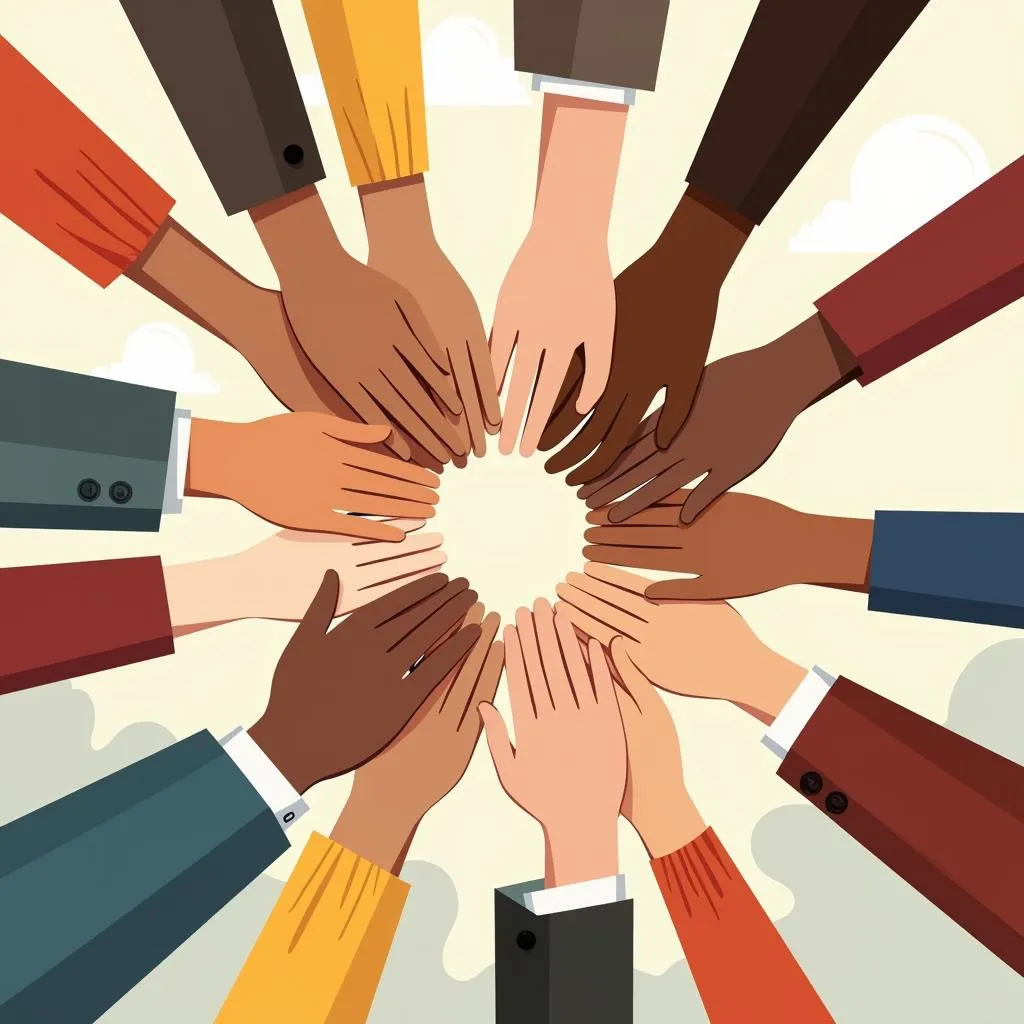In A Society Where Mechanical Solidarity Exists, individuals are bound together by shared values, beliefs, and experiences. This concept, coined by sociologist Emile Durkheim, describes a type of social cohesion found in traditional, homogenous societies. Imagine a small village where everyone works the same land, practices the same religion, and celebrates the same traditions. Life is predictable, roles are clearly defined, and a strong sense of community prevails. This is the essence of mechanical solidarity – a unity born from similarity.
How Does Mechanical Solidarity Manifest in Society?
Mechanical solidarity is not just an abstract theory; it has tangible expressions in the social fabric. Here are some key characteristics:
- Collective Consciousness: There is a strong sense of collective consciousness, where individuals identify strongly with the group and its norms.
- Shared Beliefs and Values: A common set of beliefs, often religious or traditional, forms the bedrock of social life.
- Low Division of Labor: Work is often shared, and specialized roles are less common, leading to economic interdependence.
- Emphasis on Conformity: Individuality is often subsumed within the group, and conformity to established norms is highly valued.
- Repressive Laws: Legal systems in societies characterized by mechanical solidarity often focus on punishment and maintaining the collective order.
Can Mechanical Solidarity Exist in a Modern, Diverse World?
The modern world, with its emphasis on individualism, globalization, and diverse subcultures, seems a far cry from Durkheim’s concept of mechanical solidarity. We celebrate our differences, move freely between countries, and are exposed to a constant flow of new ideas and beliefs. Does this mean mechanical solidarity is a relic of the past?
Not necessarily. While less common in its purest form, elements of mechanical solidarity can still be found in various aspects of modern life:
- Tight-knit Communities: Think of close-knit neighborhoods, religious groups, or even online communities united by a common interest. These groups often exhibit strong internal bonds, shared values, and a sense of collective identity.
- National Identity: Patriotism and national pride, particularly during times of crisis or celebration, can evoke a sense of collective identity and shared purpose, reminiscent of mechanical solidarity.
However, it’s crucial to acknowledge that the mechanical solidarity found in modern societies differs significantly from its traditional form. Diversity and individualism are celebrated, and the pressure to conform is far less intense. Instead of complete homogeneity, we see a blending of mechanical and organic solidarity, where unity coexists with individuality.
The Challenges and Opportunities of Mechanical Solidarity in a Globalized World
While mechanical solidarity can foster a strong sense of belonging and social cohesion, it also presents challenges in a globalized world:
- Resistance to Change: The emphasis on tradition and conformity can make societies built on mechanical solidarity resistant to change and new ideas.
- Potential for Intolerance: The strong in-group identity can sometimes lead to intolerance and prejudice towards those perceived as different.
However, understanding the principles of mechanical solidarity can also offer opportunities for building bridges in a diverse world:
- Finding Common Ground: Recognizing shared values and experiences can help bridge cultural divides and foster understanding.
- Building Community: The principles of shared purpose and collective responsibility can be harnessed to create a sense of belonging in diverse communities.
Moving Forward: Embracing Unity and Diversity
 People from different cultures shaking hands
People from different cultures shaking hands
In a world increasingly interconnected yet fragmented, understanding the dynamics of mechanical solidarity is more relevant than ever. It highlights the enduring human need for belonging, shared purpose, and a sense of community. As we navigate the complexities of a globalized society, it is essential to find ways to honor our differences while also recognizing the common threads that bind us together.
Ultimately, the goal is not to recreate the homogenous societies of the past but to cultivate a sense of solidarity that embraces diversity and promotes understanding. By fostering dialogue, celebrating our shared humanity, and actively working towards a more just and equitable world, we can create a society where unity and diversity can thrive together.
FAQs about Mechanical Solidarity
1. What is the main difference between mechanical and organic solidarity?
Mechanical solidarity arises from similarities, while organic solidarity emerges from interdependence and specialization in a complex division of labor.
2. Can mechanical solidarity exist without a shared religion?
Yes, while religion is often a strong unifying factor, other shared values, cultural practices, or even shared experiences can contribute to mechanical solidarity.
3. Is mechanical solidarity inherently negative?
Not necessarily. It can foster a strong sense of community and belonging but can also lead to resistance to change and intolerance towards outsiders.
4. How can we promote understanding between groups with different forms of solidarity?
Open dialogue, empathy, and a willingness to learn about other cultures and perspectives are crucial for bridging divides.
For further exploration on building peace and understanding in a diverse world, browse our website or contact our team:
Phone: 02043854663
Email: [email protected]
Address: Khu 34, Bắc Giang, 260000, Việt Nam
Our dedicated team is available 24/7 to assist you.